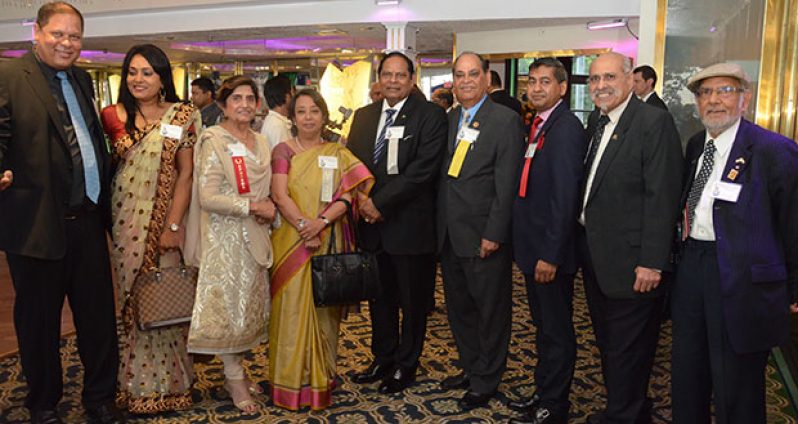By Moses V. Nagamootoo
Prime Minister of Guyana
THE Global Organisation of People of Indian Origin (GOPIO) gave my wife and I a red carpet welcome at their 27th Anniversary Convention, held last weekend in New York. The gathering comprised key players in finance and business within the Indian communities in Asia, Europe, Africa and the Pacific.The organization was founded in New York in 1989 when another Guyanese leader, Dr. Cheddi Jagan, was the Chief Guest. During previous conventions, GOPIO honoured Guyanese personalities such as Yesu Persaud, Bharrat Jagdeo and Donald Ramotar. In 2008, I accepted its Community Award in New Delhi, India.
This year, President David Granger was invited as Honoured Guest, but he asked that I attend in his place, as he stayed home to guide arrangements for the co-hosting by Guyana of the Summit of Caribbean Community leaders.
On our arrival, we were warmly received by the Convenor, Mr. Lal Motwani; GOPIO’s President, Mr. Niraj Baxi; and its Founder President, Dr. Thomas Abraham. The flags of India, United States of America and Guyana formed the backdrop of what was a multi-national event, and the Convention commenced with the playing of the national anthems of the three countries.
It was clear that we were welcomed and recognized not because of our perceived “Indian-ness”, but on account of our nationality as Guyanese. While the majority of the delegates were Indian Americans, other look-alike attendees were quick to introduce themselves as Fijians, Malaysians, and nationals of Australia, Great Britain, Bahrain, Dubai, etc. Amongst them were a British Peer and a Zulu Prince from South Africa.
Days before I left Guyana, I was “advised” by several persons who portray themselves as “Indian activists” not to attend the GOPIO event. It appeared that some of these “Indian activists” — who were born in Guyana, Trinidad and elsewhere outside India — were excluded from leadership positions in an apparent shake-up within the organization. More recently, the leadership vacuum was filled by Indian nationals who were living outside of India or who have a direct Indian origin.
Sita and I didn’t try to be anything other than Guyanese. When I addressed the Convention, I put it this way: “Though we are defined by our distinct and different nationalities, almost one-half of the population of Guyana shares ethnic-cultural and ancestral relationships with India. We share a common political history of rule by the British. After slavery ended, the British recruited mainly Chinese, Portuguese and Indians to supplement freed African labourers on the sugar estates. In my case, I have traced my ancestry to South Indian indentured immigrants who arrived in 1847 in the then British colony and were bonded to the sugar plantations on the Guiana coastland. My ancestors and many other immigrants chose not to return to India, and accepted Guiana as their new homeland”.
India has a diaspora of some 30 million people. The past and present governments have pursued policies through a dedicated Ministry of Overseas Affairs to mobilise the resources of this diaspora for the development of India. We can learn immensely from GOPIO of how this is being done. That was why I invited the organization to lead a delegation of investors to Guyana.
In the United States alone, there are about four million Indian Americans. I made a direct pitch to them when I stated: “We, too, would like to tap into the resources of the estimated four million Indian American community, which is distinguished for their business acumen and technological capabilities. We say: Guyana welcomes you…. There are ample opportunities for the American Indian diaspora in renewable energy supply (solar, wind, hydro etc.). There are unbridled opportunities for large-scale agricultural projects, agro-processing and aquaculture on extensive arable lands, development of which has been restricted for centuries to sugar cultivation…. We are relatives; now we must become partners.”
The interest shown by the GOPIO gathering has a similar ring to the enthusiasm which was exuded at the ministerial meetings spearheaded by our Business Minister in Toronto and New York. I was able to interface at the convention with some 30 potential investor firms, and listen at separate meetings to investment and tourism interest by Chinese-American entities. We need to continue as well as expand this interaction, and reach out to investors from Africa and Latin America.
GO-INVEST is placed on notice to put in place a rapid response mechanism to process all indications of interest and project profiles from overseas investors. Guyana urgently needs a new investment wave for economic growth and development.



.jpg)









